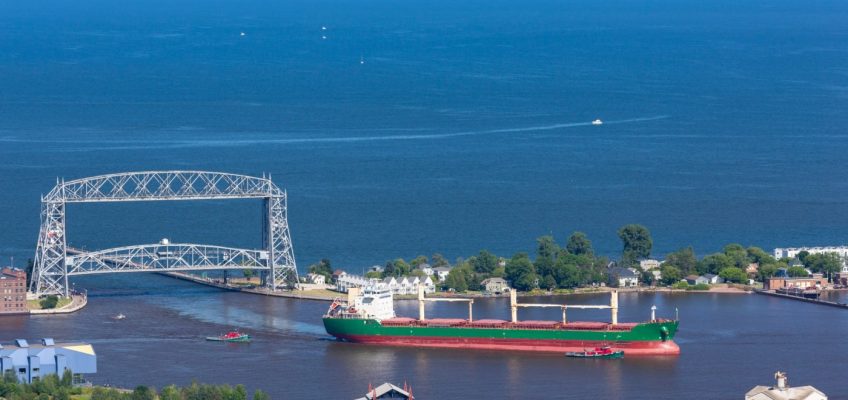DULUTH — Researchers studying blue-green algae blooms in the Duluth-Superior Harbor have pinpointed the cyanobacteria species responsible for the bloom’s toxins in what the Minnesota Sea Grant, which supported the research, called a “breakthrough discovery.”
By sequencing DNA from a bloom near Barker’s Island in Superior last fall, researchers were able to link the toxins to Microcystis aeruginosa, a cyanobacterial species. Knowing this, they hope to better understand, detect and predict when a bloom might occur, or even trace the blue-green algae, or cyanobacteria, to a source higher up the St. Louis River Estuary.
This species of cyanobacteria can create toxins that are harmful to humans and animals, and “chokes out” other species in a water ecosystem, said Abby Smason, a water resources science graduate student at the University of Minnesota Duluth and member of the research team.
“This is the first time we’ve kind of been able to make that one-to-one connection of: There’s this genome for this species, and it’s in the harbor, and it’s in this spot where there was a bloom, and it also has this gene that it would need to make toxins,” Smason, who collected the sample, told the News Tribune.
It’s the same species that regularly forms harmful algae blooms in Lake Erie, even prompting the city of Toledo, Ohio, in 2014 to order residents not to use their water for nearly three days after algae entered the water system’s intake.
“This organism does have the potential of wreaking some havoc,” said Cody Sheik, associate professor at the University of Minnesota Duluth’s Large Lakes Observatory, who led the research team with Chris Filstrup, an applied limnologist at the University of Minnesota’s Natural Resources Research Institute.
Sheik said the area near Barker’s Island, which includes a public swimming beach, has become “kind of a hot spot for blooms every year,” but it’s been hard to quantify — the blooms come and go quickly.
“It does seem like they are becoming more prevalent, and maybe even a little bit more intense,” Sheik said. “It seems like it’s going to be a growing problem that we’re going to have to deal with here for the next however many years.”
However, anything found in the harbor, so far, has been below Minnesota and U.S. drinking water standards, he said.
Sheik said that at high enough concentrations, the toxins can kill pet dogs within hours and can affect a person’s liver or get into their lungs. Concentrations of what has been found now might cause some swimmers’ itch, he said.
Since the first confirmed blue-green algae bloom on Lake Superior in 2012 — after a massive rainstorm across the region loaded the lake with nutrients from runoff — several additional blooms have been observed. But they have so far been caused by other strains of cyanobacteria, not the Microcystis aeruginosa identified as the source of toxins in the Duluth-Superior Harbor.
But the harbor ultimately flows into Lake Superior. And with climate change causing warmer waters, less ice cover and additional, heavier rain events that wash nutrients cyanobacteria feed on into the lake, researchers are keeping a close eye on the lake.
“Conditions aren’t ideal for many of these strains to really propagate at high frequency, but as the lake continues to change, are conditions going to be better and better for these organisms where they can start outcompeting other things within the lake itself and making these toxic blooms?” Filstrup said.
Related Articles
The National Weather Service issues Alaska’s first ever heat advisory
Peanuts or almonds? Rice or millet? Planet-friendly grocery shopping choices go beyond cutting meat
Ping, ping ping. Here’s what it’s like to drive into a big hailstorm in the name of science
As labor costs rise, AI is learning to farm
Trump signs measure blocking California’s ban on new sales of gas-powered cars
Back in the harbor and the St. Louis River Estuary, the researchers hope to pursue additional testing and monitoring, potentially allowing them to predict when conditions are right for blooms.
And knowing the exact species producing these toxins could help them find where in the estuary they are developing.
“If we figure that out, then we might be able to start thinking about ways of remediating,” Sheik said.


Leave a Reply